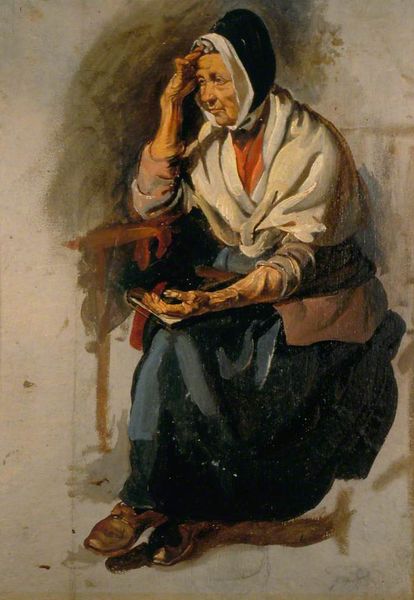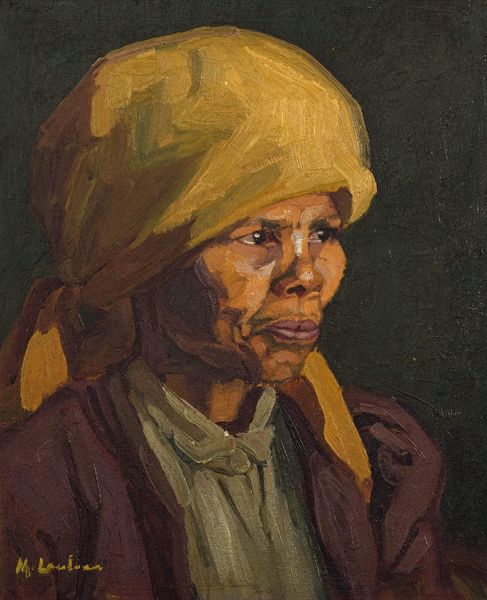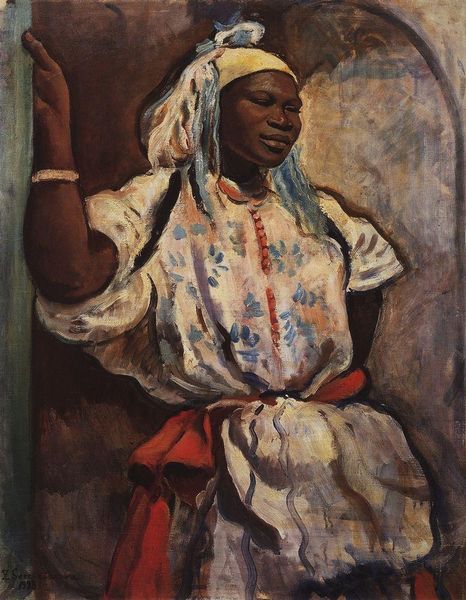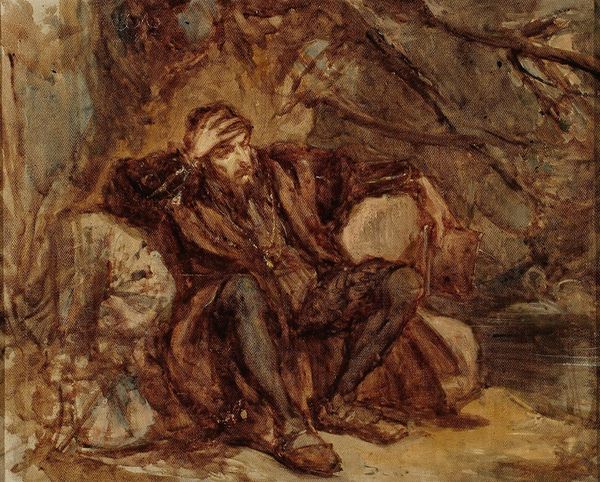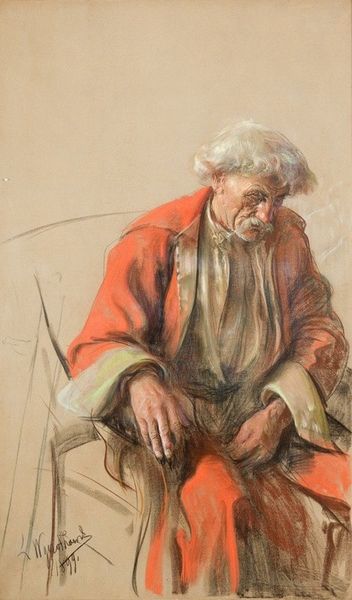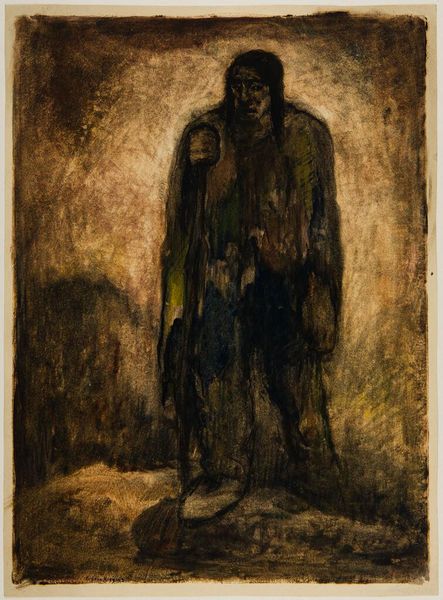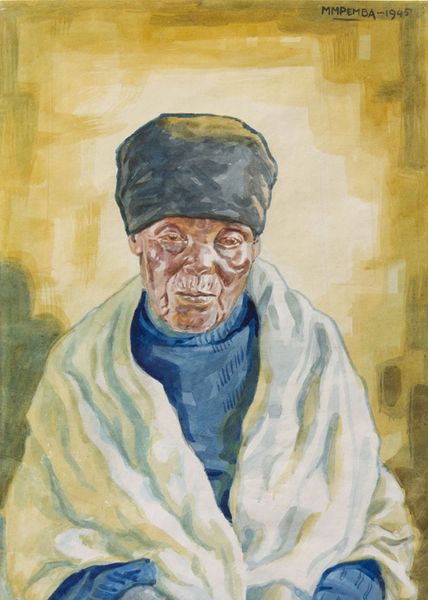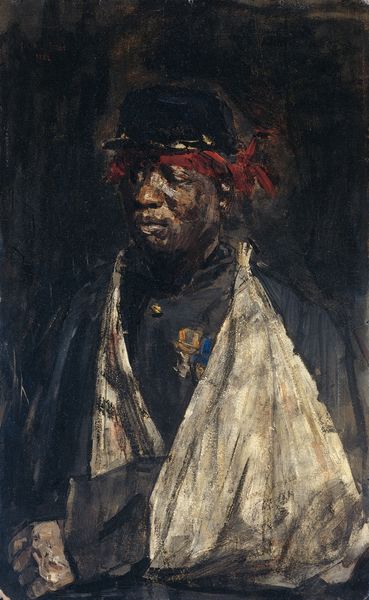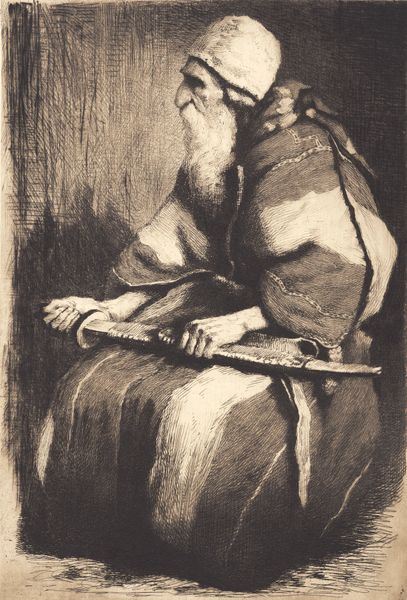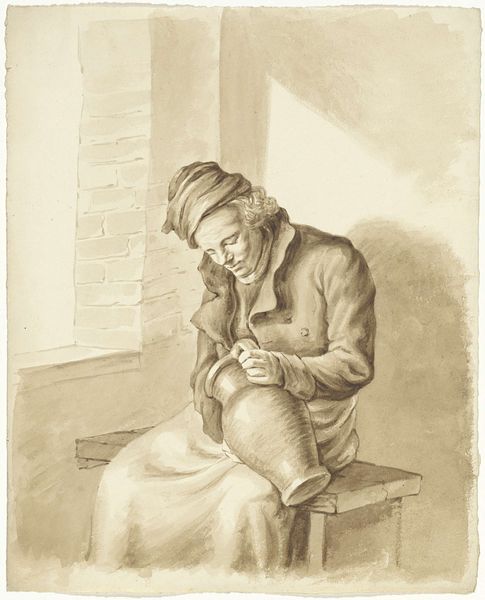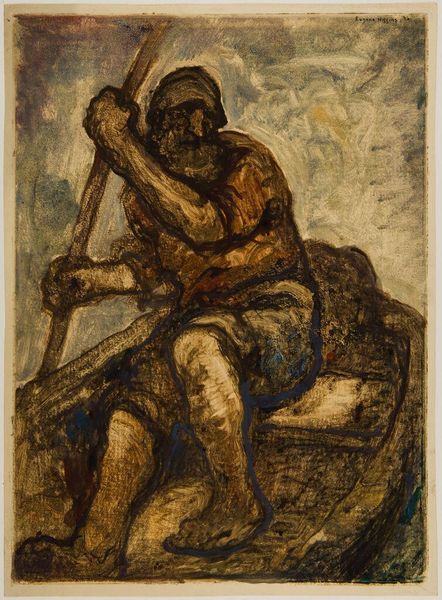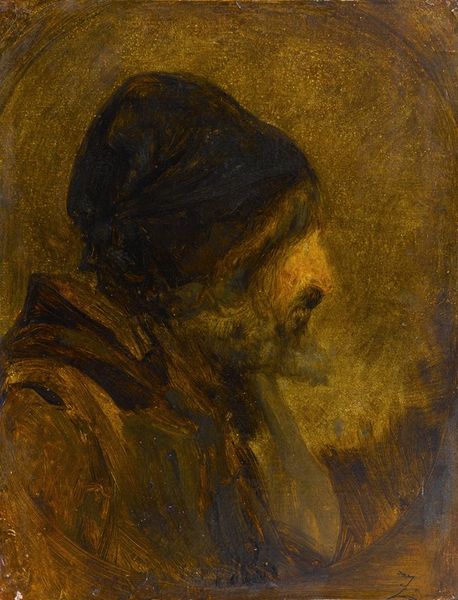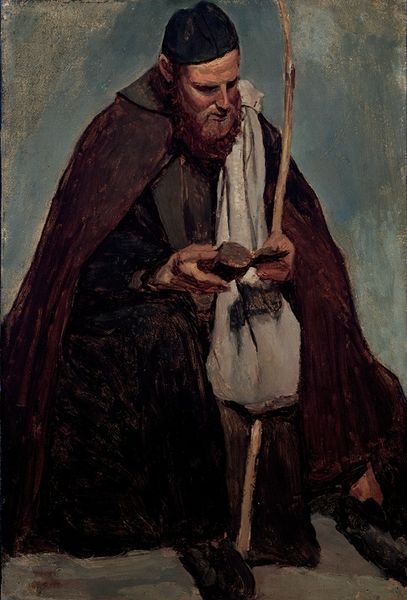
oil-paint
#
portrait
#
figurative
#
oil-paint
#
oil painting
#
portrait drawing
#
genre-painting
#
realism
Copyright: Public Domain: Artvee
Curator: Welcome, I would like to introduce you to Eastman Johnson’s oil painting, Dinah, Portrait Of A Negress. Editor: My immediate impression is one of stillness and muted warmth. The color palette, dominated by earthy browns, reds, and blues, creates a sense of quiet dignity, while her seated pose seems very relaxed. Curator: Johnson painted this around the time of the Civil War, a period marked by intense social and political upheaval surrounding abolition and Reconstruction. Works like this provide critical insight into the experiences of African Americans during that period. Consider how this depiction of Dinah challenges prevalent stereotypes of Black individuals in mid-19th century American art. Editor: I see how Johnson uses the interplay of light and shadow to sculpt her face, highlighting the wisdom etched in her expression. It reminds me a little of Rembrandt, who was similarly masterful in rendering the effects of aging. Note also how her gaze doesn't quite meet ours. What does this visual choice accomplish? Curator: The gaze perhaps offers a sense of interiority, inviting the viewer to consider her life beyond the canvas. It avoids the common pitfall of objectification that plagued many portraits of marginalized individuals. Furthermore, the choice of calling the work "Dinah, Portrait of a Negress" situates her as an individual. Editor: I am struck by how the textures are so compellingly rendered. From the fabric of her headscarf to the smooth surface of the wooden staff, and the subtle variations in the background wash, Johnson's application of oil paint gives depth to every object, enlivening them with their tactile details. Curator: It's also worth contemplating the choice of a generic title. Was Dinah's full identity erased, unrecorded, or deliberately omitted? Her story and agency are likely obfuscated within historical narratives, prompting vital questions regarding visibility, erasure, and representation. Editor: I now better appreciate the artistic choices that render not just her physical likeness but perhaps her inner essence as well. Johnson directs our focus on this single subject. Curator: I agree, through Dinah’s dignified stance and quiet repose, Eastman Johnson creates a portrait that both commemorates and encourages us to consider her place in a broader history of representation and race.
Comments
No comments
Be the first to comment and join the conversation on the ultimate creative platform.
